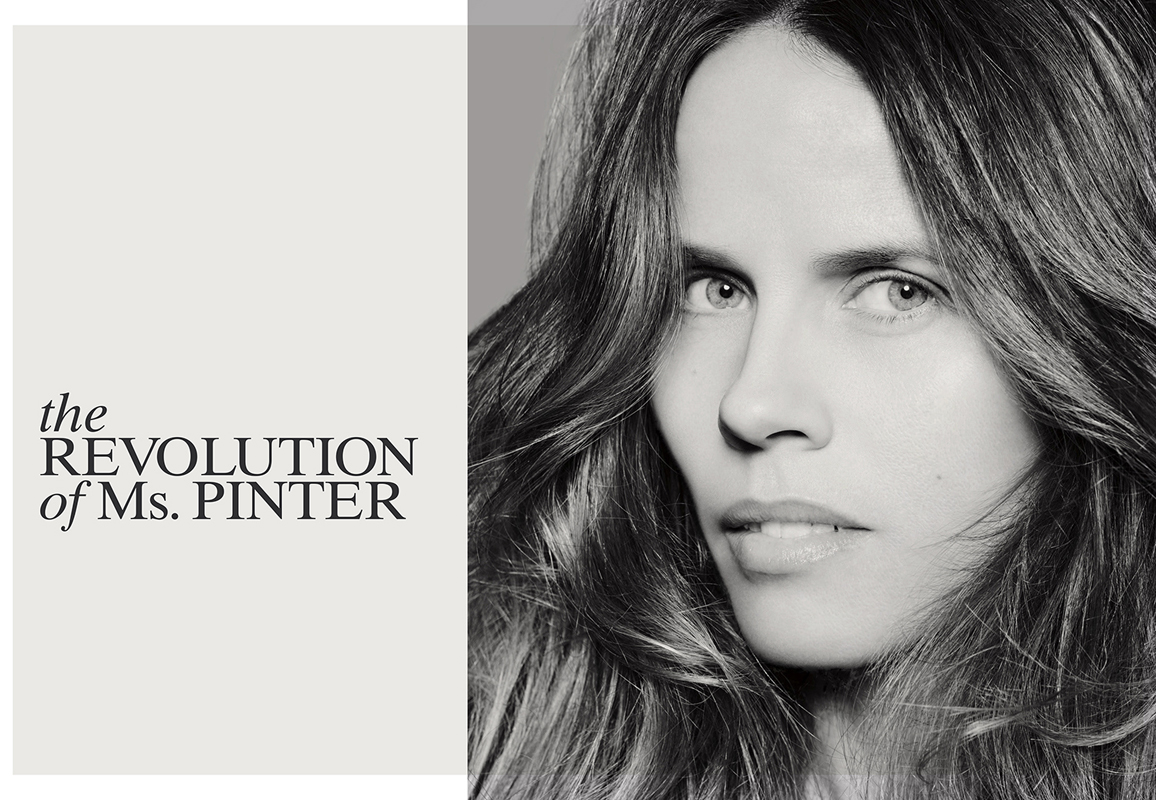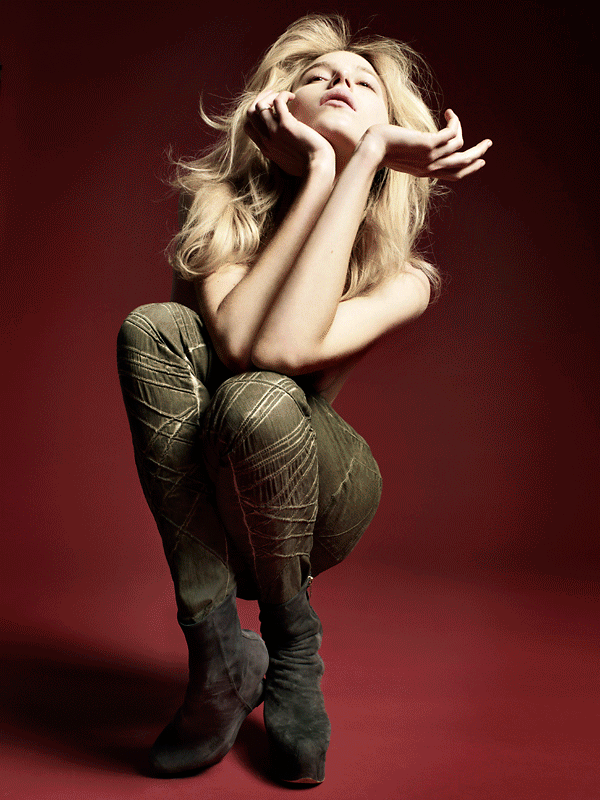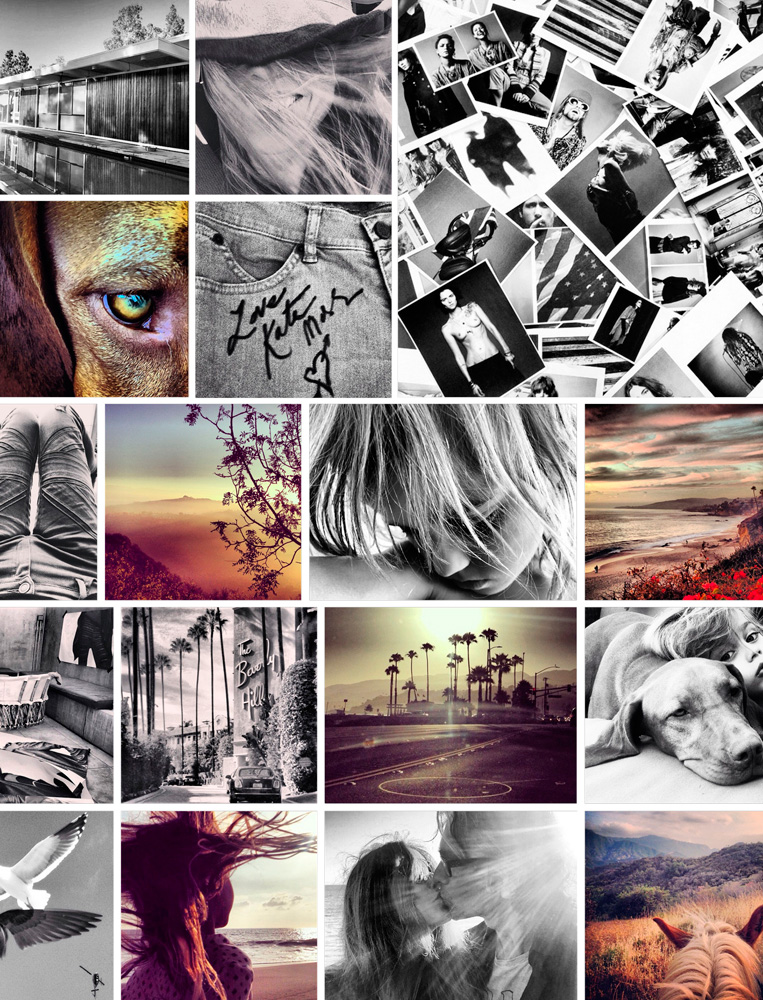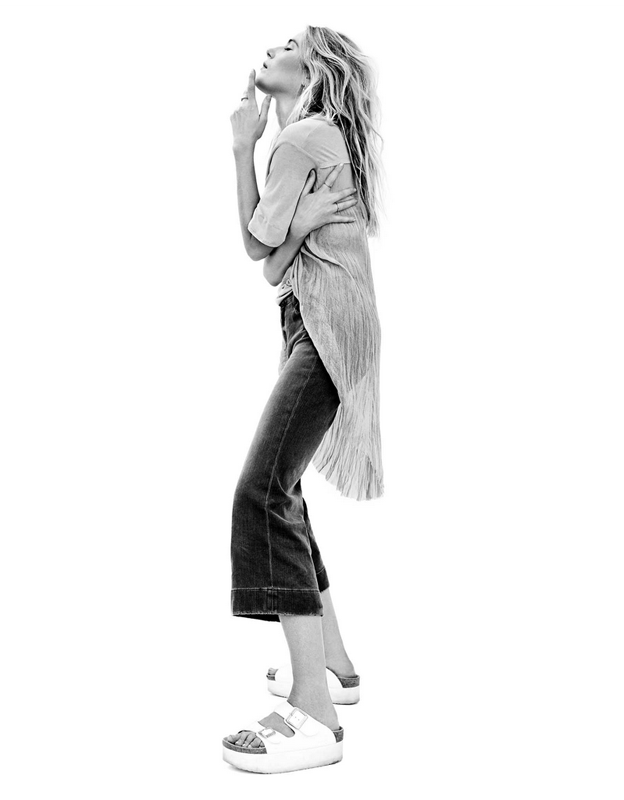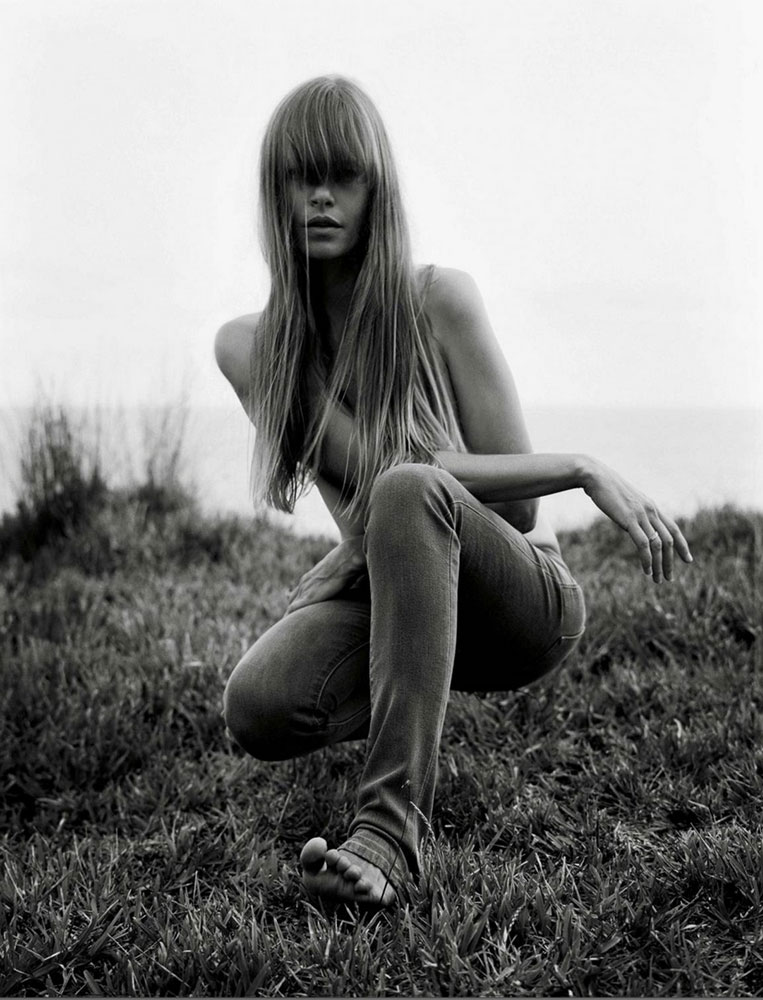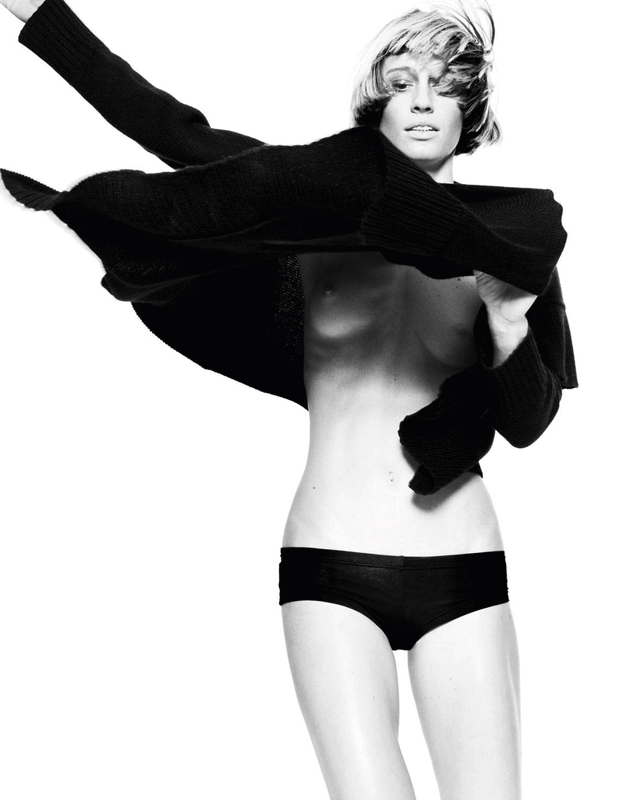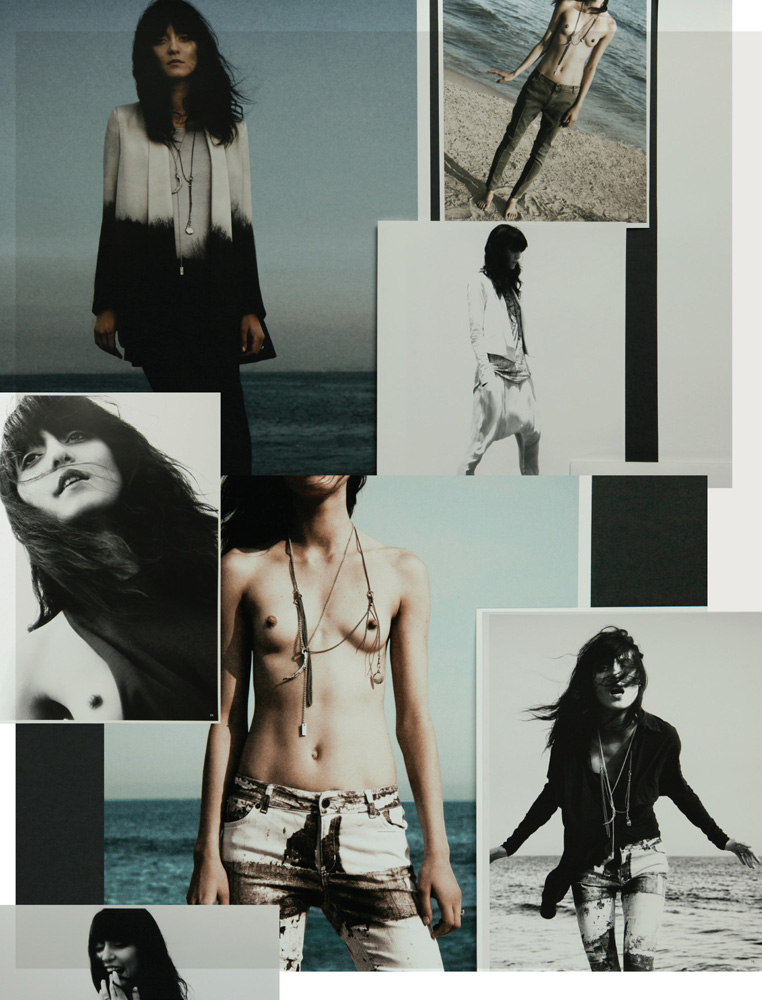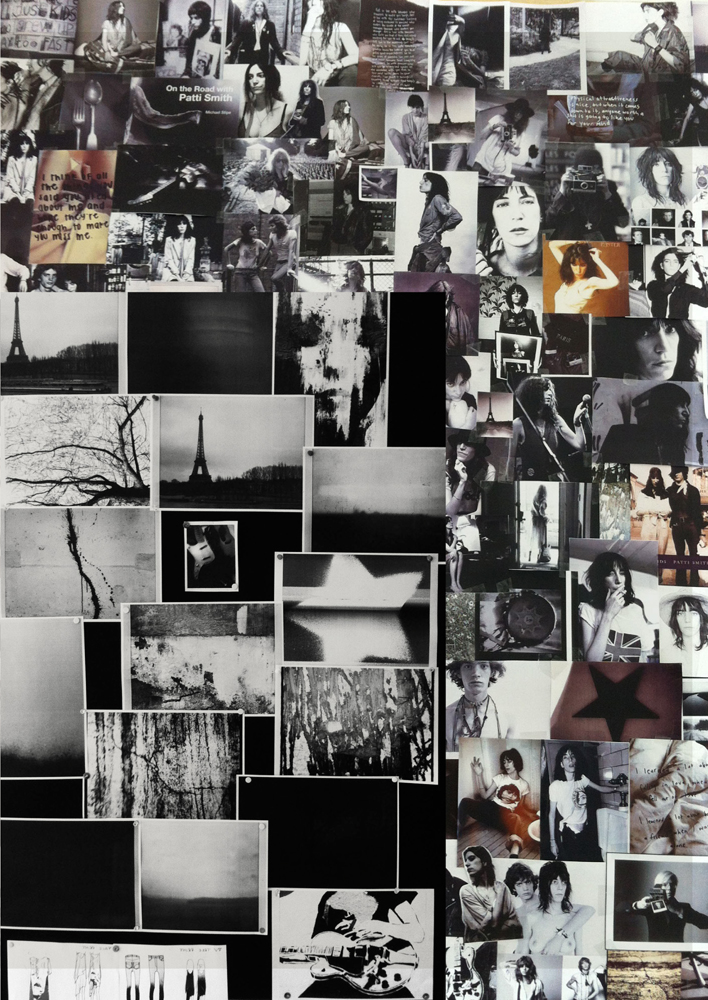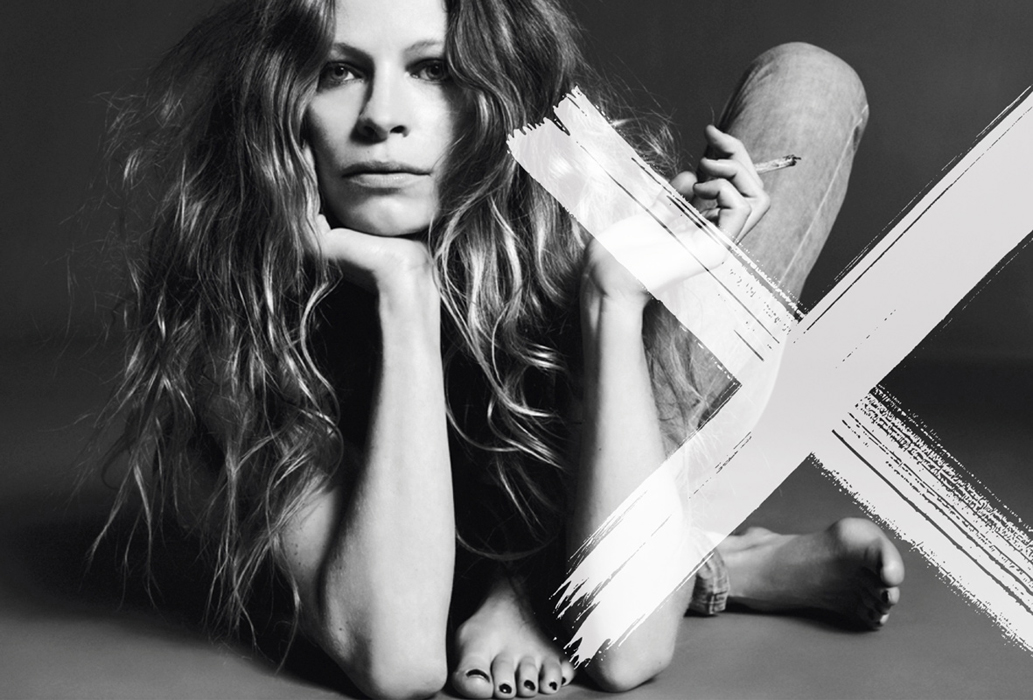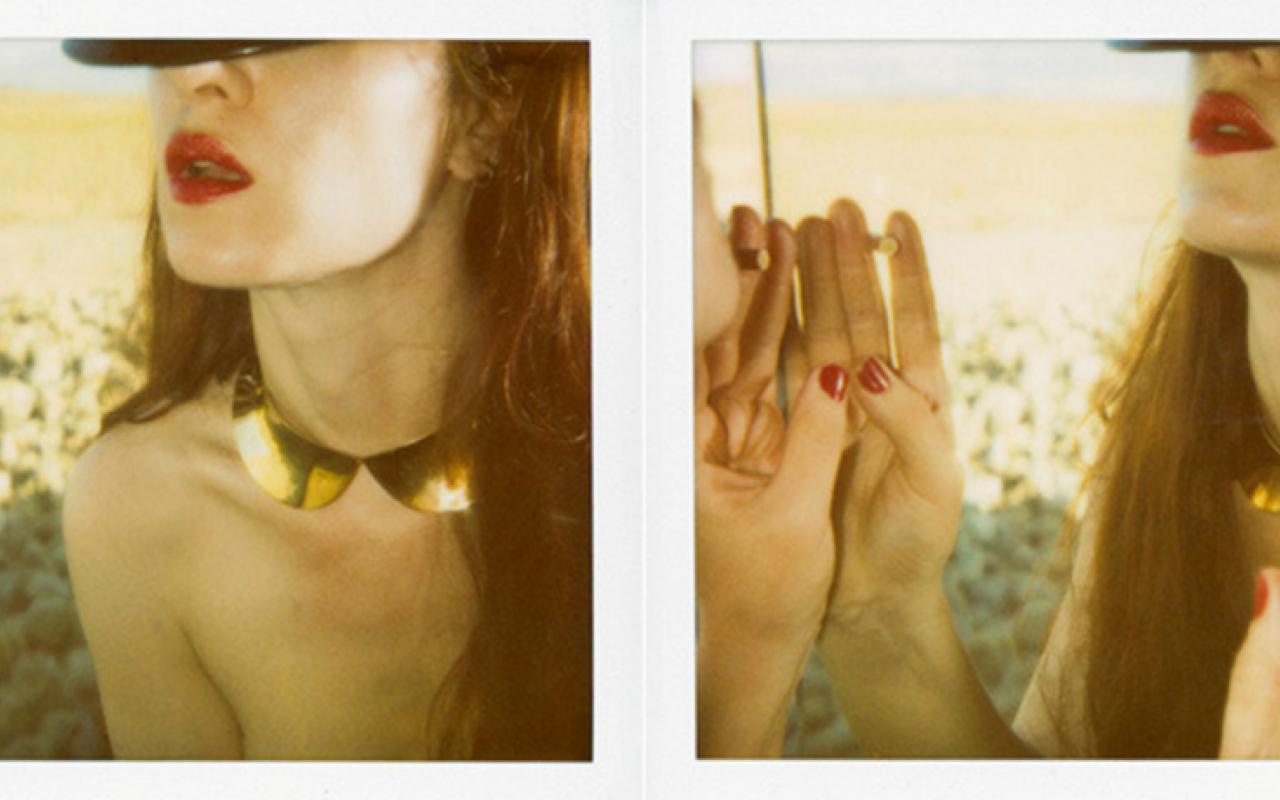profile \ 03
Lucy Pinter
Fashion Designer, Stylist, Entrepreneur
In the '90s, while most Australians were in the throes of public debate about whether we, as Aussies, should move away from our British roots and form a Republic, Lucy Pinter had left the land of Oz behind. She had embarked on a journey that would ultimately lead her toward the Motherland and in time, the birth of her high-end denim label Superfine.
There is something quintessentially punk about Lucy.
In discussion with Ms. Lucy Pinter
Interview by Jamie Huckbody
“I wanted sun! But then again, who doesn’t?” declares Lucy Pinter, the 46-year-old mistress of Superfine, one-time niche denim label and now an international fashion empire in the making.
Pinter is chatting from The City of Angels where, she and her photographer hubby Jan Welters live with their two children, in an Algelil Graham house, just a stones throw from Malibu.
“It’s such a beautiful space here. Our house sits at the top of the Topanga Canyon. It’s like it’s almost floating. It's the best move we’ve ever made,” says Pinter with all the glee of somebody who really does get to have their cake and eat it too.
“It’s been a period of transition for me, both personally and professionally and this complete change of scene - from being smack bang in the middle of big cities to here, high up in the mountains - is just part of it. We still have our apartment in Paris and we travel regularly so we have a foot in Europe but we'd never go back there to live.”
The change of address is just part of the seismic shift occurring in Pinter’s life-at-large, which includes the Superfine label she set up with her partner-in-crime Flora Evans back in 2004.
Heading-up the most exciting chapter within the brand’s eleven-year history is the new CEO Chris Tate, previously President of James Perse and who helped develop brands such as Rag & Bone, Helmut Lang and Proenza Schouler.
“This is the first time that Superfine is being operated while not under license. It's a very American way of doing business, with investment and time and strategy. We relaunched in the U.S. last autumn and in Europe and Japan in early 2016,” Pinter explains.
“What is really exciting is that we have a new line called Fine, launched in the U.S this year. It is gorgeous, completely developed and produced in Italy, which is very rare in this product category. [Most affordably priced diffusion collections are manufactured in China.] We are all very excited for what may come.”
But then, such savvy empire building comes as no surprise. Pinter and Evans have a sixth sense for what women want now, starting with, yes, those skinny jeans that revolutionised the daily grind of getting dressed for women the world over.
“I can tell you that before we started out there were definitely no skinny jeans to be found,” says Pinter of the brand’s signature style that won fans in everyone from Kate Moss to Alison Mosshart, Beyoncé to Rihanna and which created a new blueprint for dressing whether it be casual or evening (add a tuxedo and heels).
"I had a pretty classic Aussie childhood," says Pinter, nodding. "In fact, now that I have kids, I realise how perfect my childhood actually was: hot tarmac underfoot on hot summer days; the beach."
“I had a pretty classic Aussie childhood,” says Pinter, nodding. “In fact, now that I have kids, I realise how perfect my childhood actually was: hot tarmac underfoot on hot summer days; the beach.
We had an outdoor life. I think about my childhood now much more than I ever did, because you tend to compare your youth to your children’s. LA was the closest thing that I could give my kids to Australia while Jan and I are able to continue our careers.”
Pinter left Australia when she was 18 years old to travel around South East Asia.
“I had absolutely no idea what I wanted to do with my life and I was just enjoying exploring. Then I ended up meeting [the photographer] Eddie Monsoon who was shooting for the very first issue of Dazed & Confused magazine in Kathmandu. He spotted me in Durbar Square and asked if he could take my pic.”
She pauses to reassure me that this is all relevant to the bigger story.
“Then, years later, I decided to go to London. It wasn’t to learn any trade; I just had an around-the-world ticket. So, I arrived in London with 20 quid, a small backpack and one Aussie contact living in a squat near Hyde Park. He got me a job in the bar he was working in. It was a really, really fun time. We were out every night, sleeping most of the day, and I found London incredibly exciting. Then I got a job in a nightclub where I ran into one of the guys who was with Eddie in Nepal. He called Eddie, and through Eddie I met Judy. And that was the start of it all really.”
The Judy in question is Judy Blame, the London super-stylist who, along with photographer Ray Petri, created the ‘Buffalo’ look that defined London street culture in the late-1980s, and with whom Pinter would work with closely for the next five years.
“Most of those five years were pretty funny,” grins Pinter. “Judy is a one-off; as authentic as you can be. He also drove me completely crazy a lot of the time but we laugh about that now.”
Fast forward a decade and those skinnies (this season in leather mix and embroidered versions) are just a tiny part of a bigger collection of separates that now sits comfortably alongside fashion heavy hitters Isabel Marant, Helmut Lang and Alex Wang at prêt-à-porter level.
“Today, Superfine only has two denim pieces in a 100-piece collection,” says Pinter who is the brand’s best advertisement in a pair of cropped, high-waisted and wide-legged jeans with a kimono-sleeved tee, Rick Owens sandals and a hat. (“I'm always in a hat.”)
“We now have all the denim, sweat and cottons in the Fine range. I have faith they will perform beautifully at the accessible price point.”
So what’s the secret behind Pinter and Evans’ success?
“Timing - we brought the skinny jean out exactly at the right moment, Kate [Moss] and my husband Jan. Those three things are the key to Superfine’s success.”
Pinter’s photographer husband Jan Welters, who just so happens to have shot for every major European edition of Vogue, has helped cook up Superfine’s seductive advertising campaigns that have added to the brand’s fashion-editorial feel.
“Working with Jan is a dream,” says Pinter. “I loved his work even before I met him. For us, it’s a totally free creative outlet. We do whatever we want with no restraints and it’s honestly a joy. Of course, there are occasional moments where we don’t exactly see eye-to-eye but it all gets smoothed out pretty quickly.”
"Working with Jan is a dream," says Pinter. "I loved his work even before I met him. For us, it’s a totally free creative outlet. We do whatever we want with no restraints and it’s honestly a joy."
Other Superfine collaborators include the London-based super-milliner Philip Treacy and the NYC designer/ex-Balenciaga Princeling, Alexander Wang.
“Philip is brilliant. I knew him through Judy and was always amazed by the commitment to his craft. I was thrilled when he agreed to do some hats for us. We wanted to take Philip’s high-end couture feel and rock ‘n’ roll it up a bit.”
“As for Alexander Wang, believe it or not, it was he who approached us. He wanted to do a small capsule of three denim pieces to add to his catwalk show. It was obviously a great experience and lovely when he emailed to say he was thrilled and that all three pieces made his show.”
Listening to Pinter, you get a sense of just how grateful she is for the opportunities her career has afforded her. And that she is only too aware of the personal journey she has made since leaving the safety of her, middle-class Sydney North Shore upbringing in 1989 for that quintessentially Aussie rite of passage: the big overseas tour.
It was around this time, while prepping and styling advertising campaigns, music videos and fashion editorial, that Pinter first encountered a problem that would eventually inspire her to establish Superfine.
“I couldn’t find any skinny jeans. Everything was bootleg and distressed. I would tape the jeans or put them inside boots until, one day, Judy said, "You’re always bloody using jeans, you may as well make denim your thing, darling." It sparked something. I figured he was right. I asked Flora to join me in the venture and she was up for it. Little did we know what was ahead. I’d never have done it if we had even the slightest clue.”
Tales of arriving in foreign cities with no hotel accommodation sorted, of gate-crashing Naomi Campbell’s evenings and organising fashion shoots at the eleventh hour abound.
“Once, we were sitting in a bar in New York with [photographer] Mark Mattock and Judy says, ‘So is everything ready for the i-D shoot tomorrow?’ I looked at Mark. Mark looked back to me. We had absolutely no idea what he was talking about. Apparently we were there to do a supermodel shoot the very next day. When I tried to explain to Judy that it might be difficult to get the clothes in time for the morning he simply said, ‘Oh, you’ll be fine.’ I asked which models we were shooting and he said, ‘I don’t know, darling. Didn’t you organise that?’ It was total chaos. Somehow, within only a few hours, we got six great girls and a bit of clothing from a few very understanding press officers. We did not, however, have enough for a 10-page shoot. Judy said, ‘Not to worry, darling. I’ll collect some rubbish and Mark can shoot spreads. It will be fabulous.’ So, in the streets of New York, he threw the girls in some rubbish and used a roll of CAUTION tape that he had found, to wrap all around them. He cut up rubbish bags and used some ropes he had brought with him. I’ll never forget it.”
Blame’s rock ‘n’ roll-with-it way of working and the post-Punk aesthetic that is at the root of all his work were to have a profound effect on Pinter and the clients she would later work with as a stylist within her own right.
“People may have taken me more seriously as they knew me through him,” admits Pinter who, when asked about a career secret, confesses, “I styled Amy Winehouse in the early days for her first album. I don’t think anyone knows that little tidbit.”
The constants that have run like a thread through Pinter’s career are the inspiration she gets from her heroes: Patti Smith, Sam Haskins and the late David Bowie.
“The David Bowie thing goes back to my early teens. There has never been a rock star as interesting as David Bowie has there? Beautiful words and fantastic imagery. For me, he is and has always been ‘it.’ And I love Sam Haskins. I have all his books including November Girl. I love the black and white simplicity of it all. The images are strong and clear and sometimes very sexy.”
“As for Patti Smith, she is the coolest woman alive. A poet, a rock star, an artist; what more can you want? And she ages beautifully; just an older version of who she always was. That’s an inspiration in these times of crazy plastic surgery.”
It occurs to me that all three of Smith’s heroes are not so dissimilar to Pinter herself. Both Bowie and Smith played with ideas of gender and androgyny [is there not something androgynous about skinny jeans and biker leathers?] while there is a gritty romanticism to Haskins’ work that is quintessentially rock ‘n’ roll.
“Although Cowboy Kate is his most recognised [work], it’s actually November Girl that seems to resonate deeply with the reader,” says Haskins’ son Ludwig. “The type of woman in November Girl is very powerful, independent and smart. She feels deeply, understands the world around her and who she is within it. She embraces the fact that she’s a woman.”
And isn’t that what Superfine is all about?
Isn’t that Pinter?


